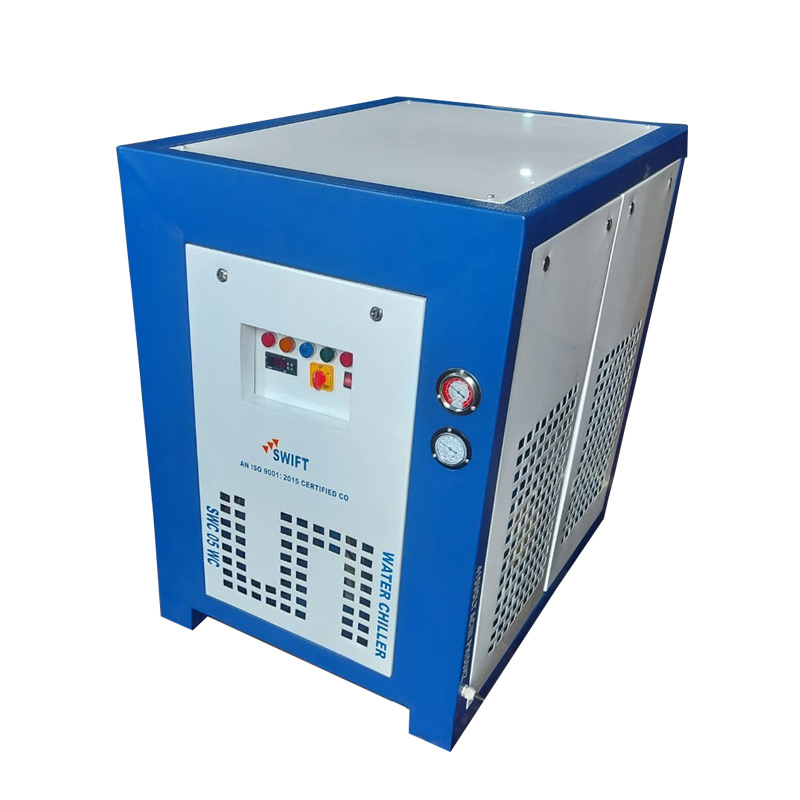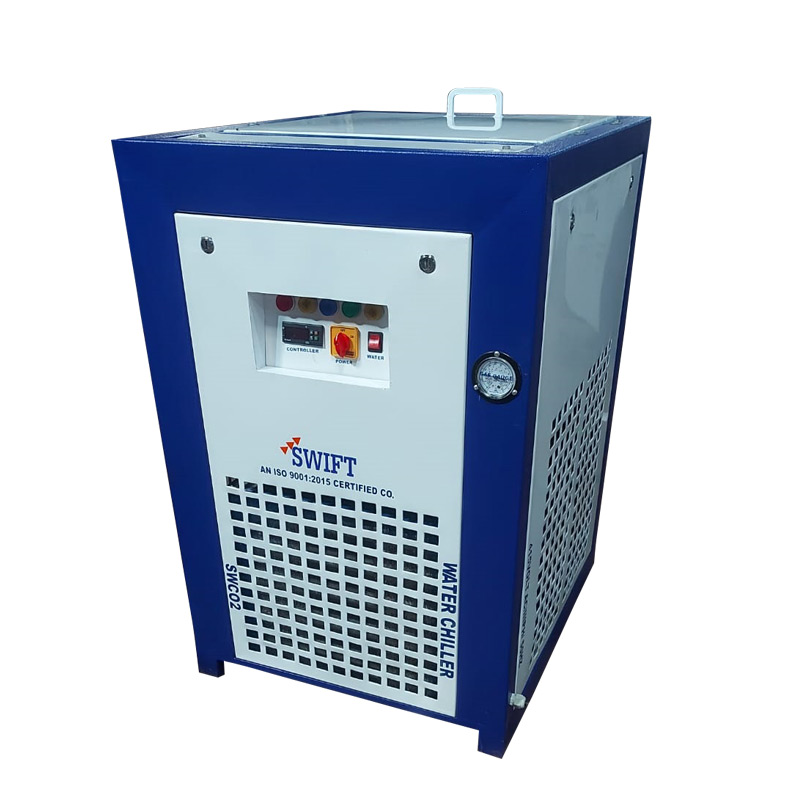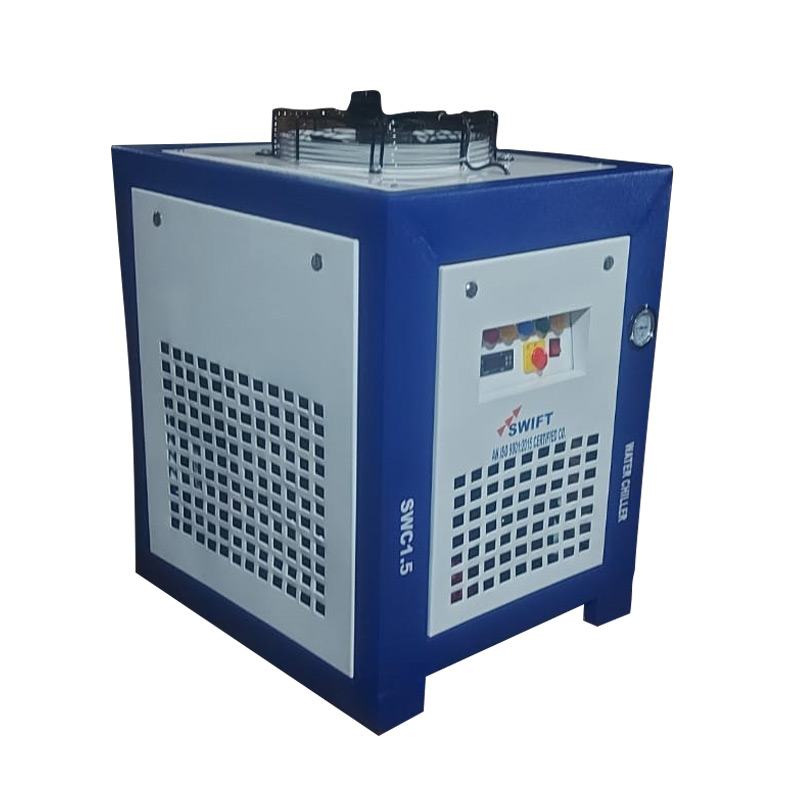A water chiller can be defined as a cooling system that exchanges heat through a series of steps: from water, to a refrigerant, and then into the atmosphere. Water chillers function similarly to other types of coolers. They cool a by way of a cycle of pressurizing, condensing, depressurizing, and evaporating a refrigerant. Unlike other chillers, however, water chillers are most often used for cooling water within an industrial setting.
Water chillers produce their cooling effect using either vapor compression or absorption cycles. Both of these processes utilize a refrigerant that extracts the heat from water as the water evaporates. Then, as the heat condenses, the refrigerant releases it into the atmosphere.
Types of refrigerants that are frequently used include methane, brine, alcohol, sulfur dioxide, ammonia, and numerous fluorocarbons. In the absorption process, the refrigeration cycle is driven by a heat source. The vapor compression process carries out the cycle using a gas compressor. The condensing phase involves a fluid from outside the system cooling the compressed refrigerant vapor and returning it to its liquid state by traveling over the condenser coils. Although water is very effective at carrying out this process, it may make the process more complicated since it requires both a water pump and an outlet such as a cooling tower. A much simpler configuration is an air cooled chiller, which blows ambient air over and around the condenser tubes and release heat energy into the atmosphere. Evaporation cooled chillers function in a similar manner as air cooled chillers, but evaporation cooled chillers introduce a mist of water around the coils so the evaporation provides extra cooling. The chiller pumps the liquid through an expansion valve once the refrigerant has condensed, and the refrigerant then begins to evaporate. At this point, the refrigerant cools and absorbs energy from the water until it is vaporized, and the cycle begins again. Centralized and decentralized chilling systems are available. Centralized chilling systems are located in a specific location and is connected to other machines in the facility by a network of pipes. Decentralized systems, on the other hand, enables each machine to have its own cooling mechanism.
Owing to the dedication of our diligent professionals, we have earned a reputed name in manufacturing and supplying the finest quality assortment of WATER CHILLER Used in different industries for cooling purposes, offered chiller is highly praised by the clients for their different quality features like in-built pump and efficient performance.
Apart from this, we provide this WATER CHILLER in variegated sizes designs and specifications.
FEATURES:
- Easy Installation
- Highly Flexible
- Increased Effectiveness




